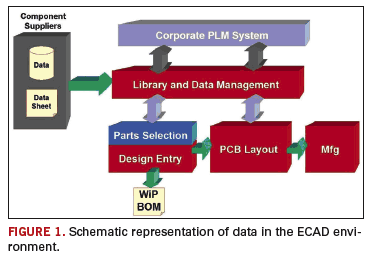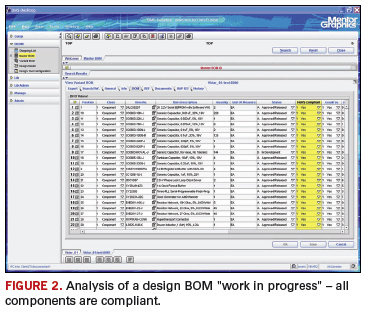Design for the Environment

To achieve inexpensive and consistent compliance for target markets, tools are needed that assist engineers in designing environmentally compliant products.
Since July 1, 2006, products sold in the EU (European Union) must be compliant with the Restriction of Hazardous Substances (RoHS) directive EU 2002/95/EC. As we all know, the introduction of this regulation had a big impact on PCB manufacturing, mainly due to the lead-free requirement for electronic products that forced manufacturing to modify soldering processes. Other restrictions on banned substances (or more exactly, strictly limited) in the RoHS directive have more impact on component manufacturers than PCB factories, as component manufacturers now have to confirm that their components are compliant to RoHS.
It was a huge effort in the market to finally become RoHS– compliant – but in the end, it was successful. Around the globe, we are seeing more and more local regulations proposed for the environment than for any other reason. Some aren’t legally required – yet – so companies volunteer to sell products compliant with these local regulations. Compliance with such optional initiatives could become a competitive advantage on that local market: environmental compatibility becomes more important for end consumers and gets publicized more commonly in informative advertising today.
Some examples for these initiatives today (per region):
European Union:
- RoHS (2002/95/EC) & WEEE (2002/96/EC & 2003/108/EC)
China:
- China RoHS: “Management Methods for the Prevention and Control of Pollutants from Electronic Information Products”
- China WEEE: “Regulations on Recycling and Disposal of Waste and Used Household Electrical Appliances”
Japan:
- JGPSSI “Japan Green Procurement Survey Standardization Initiative ”
USA:
California
- Electronic Waste Recycling Act of 2003:
- Covered Electronic Waste Payment System (SB 20/SB 50)
Maine
- Title 38, Chapter 16, § 1610 “Electronic waste”
On top of these regulations from local authorities, you can imagine that companies might want to add their own internal rules. Some might look for an easy solution to check and to prove that their produced goods are compliant with these internal company-specific rules.
It is common practice today to check for compliance using PLM systems. PLM systems typically know all components and their related compliance as confirmed by suppliers. Once a bill of material is loaded into PLM, the compliance of the product is checked based on the compliance of all objects in the bill of material. Unfortunately, this check is typically done at the end of product development. At that time, bill of materials are available for import into PLM systems. The nature of this process has a downside: if any compliance problem is detected in PLM, it is detected after the development phase. A redesign is necessary to achieve compliance for the product, this means that the overall development cost increases.
When we look into a future where we have to support multiple compliances for the local business areas that we are targeting with our products, this might not be the ideal process. To achieve cheap and consistent compliance for target markets, we have to have tools that assist developers in designing products for compliance. Once it is defined which target markets we want to address, the compliance checks have to happen in the development phase. A tool that assists developers during the design phase must handle compliance data on the level of components. As well, it must support multiple compliance checks that can be defined through configuration.
Restrictions in the Electronic CAD
In the ECAD environment (FIGURE 1), it is becoming even more complex. ECAD developers work with tools using their own set of data, such as logical and physical representations of components, simulation models and constraints. Requesting compliance checks in the ECAD development phase means that compliance data and checks have to be included into this set of engineering data. The information in the CAD-libraries has to be enriched with information on compliance that might come from a PLM or ERP system, as these systems normally are the master for this kind of information. A tight integration to PLM or ERP is required to keep the data in the CAD library up-to-date and in sync with the data in PLM.

In this new environment, data is available as selection criteria for component selection. Designers can instantiate compliant components in their design from the very beginning. If reuse blocks are imported into the design environment, these also have to be checked in detail for compliance. Reuse blocks eventually include older component data – but if reused in a new design, you want to check the content of the reuse block against the latest compliance information.
There is a solution on the market that supports all the listed tasks, combining, in a unique way, the technical data on components with the elements of CAD libraries in one system. If required, it is also possible to filter the data into a way that only compliant or non-compliant components are displayed.
Due to the flexible data structure, all information about components can be stored here, including technical and commercial information, as well as data sheets from manufacturers. Of course, all this data can be used as selection criteria while searching for components, enabling designers to use only those components that are compliant with specific regulations (FIGURE 2).

Local market requirements have an impact on development, current processes check compliance at the end of the cycle. Modifications made later in the design process to achieve compliance can be costly, but there are new tools that support compliance in an easy and inexpensive way through "design for environment." PCD&F
Josef Club is a product specialist at Mentor Graphics Europe; This email address is being protected from spambots. You need JavaScript enabled to view it.




